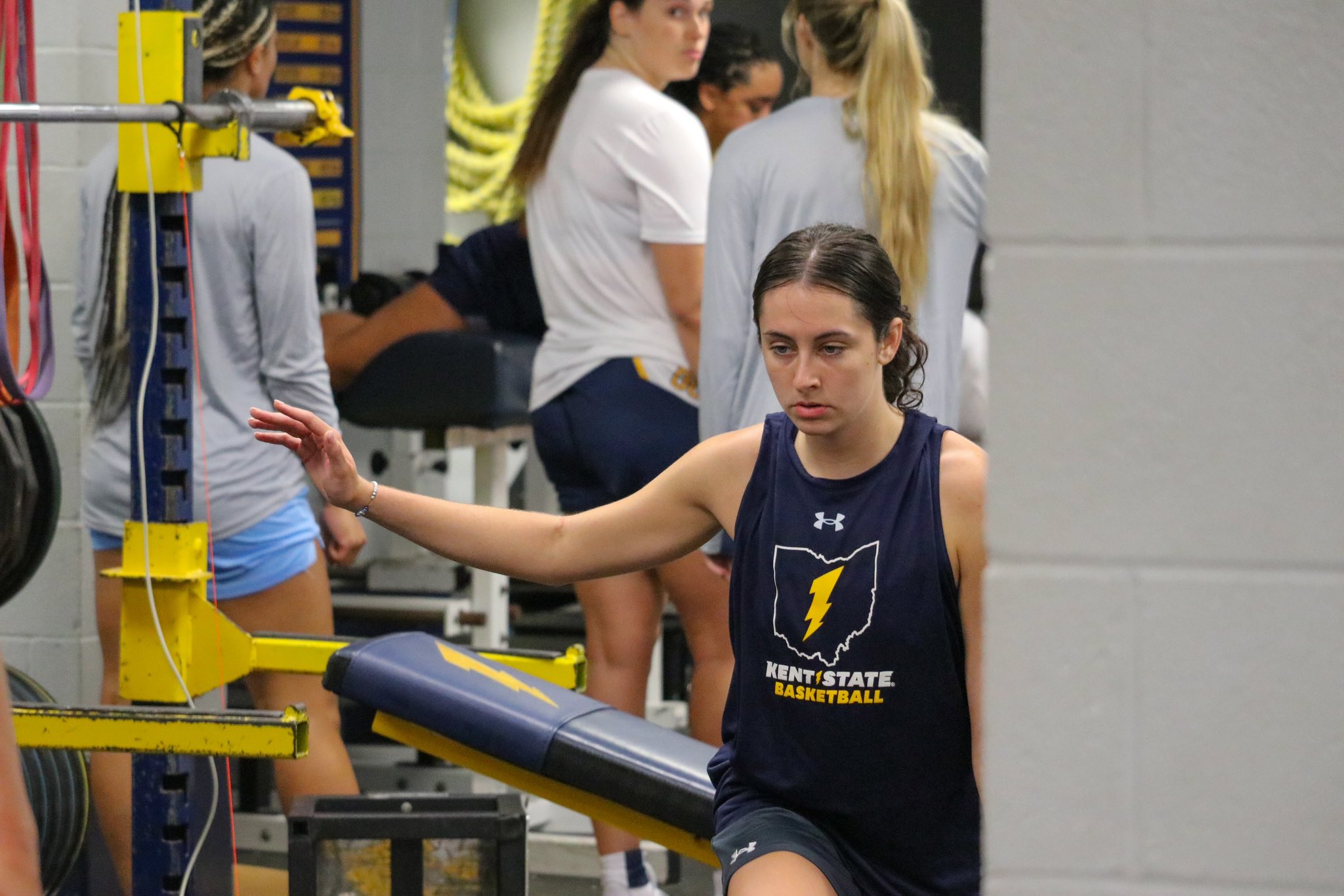Strength development tactics for women’s basketball
Women’s basketball is an acceleration and deceleration sport. Athletes are consistently changing direction and reacting to an opponent or ball.
Many of their movements are performed while pushing off one leg, unless someone is standing still or jumping off both feet, we select movements that strengthen them unilaterally teaching them not only to produce force but absorb it as well. There’s a vertical component to the game and there are times when players make physical contact with an opponent or even the playing surface. Making sure they can brace for impact or stabilize accordingly is essential.
 We categorize women’s basketball as a hybrid sport. Energy system development will be done so that it varies between aerobic and anaerobic work and training both of these energy systems will ensure we don’t have a limiting factor with regards to conditioning. There will be times when a player will be on the court with limited rest periods for 6-8 minutes at a time and there will be times when another player may be asked to only be out there for 60-90 seconds without any rest at all. We will choose activities and rest periods that are appropriate to increase their overall aerobic power and lactate threshold, both of which can be limiting factors in a player’s performance.
We categorize women’s basketball as a hybrid sport. Energy system development will be done so that it varies between aerobic and anaerobic work and training both of these energy systems will ensure we don’t have a limiting factor with regards to conditioning. There will be times when a player will be on the court with limited rest periods for 6-8 minutes at a time and there will be times when another player may be asked to only be out there for 60-90 seconds without any rest at all. We will choose activities and rest periods that are appropriate to increase their overall aerobic power and lactate threshold, both of which can be limiting factors in a player’s performance.
The input of the coaching staff is essential to ensure we are preparing our players appropriately. Our women’s basketball players and teams change every year, so we don’t train the same way every year.
Consistent communication about what coaches see daily is vital. Our coaching staff does not necessarily dictate what we do in the weight room or how we train, but their input with what they see in practice, individual skill sessions, and competition is extremely helpful so that we are in alignment with what is best for our players’ development.
Pre-Season Development:
Our pre-season training for women’s basketball consists of three weight room sessions (Monday, Wednesday, and Friday) and two on-court training sessions (Tuesday, and Thursday) for the five weeks leading up to the start of official practice. These five weeks are used to prepare our players for the start of official practices. We will focus on stimulating strength and power gradually over these five weeks. We train before practice and individual workouts, so we aren’t going to put them in a situation where there is excessive fatigue. This means that we are going to stimulate their strength and power gains without taking any of our reps to failure with the lower body. We will train relatively heavy to be strong but we’re not grinding out reps this time of the year before practices or individual skill sessions.

Each training session begins with an Olympic lift or a variation of it as a ground-based triple extension exercise and uses basic contrast training principles for both the upper and lower body. Contrast training will provide a strength stimulus immediately followed by an explosive plyometric or power movement of a similar movement pattern so that strength, power, and work capacity can be achieved in an efficient manner of time. Each training session will finish with an accessory circuit to address strength deficiencies.
On Fridays, we train after practice, and we ask for the most focus out of our players and teach the mindset of training with intent when fatigued. I understand that the concept of developing mental toughness in the weight room is questioned, but I think that it can be trained in the weight room. I think it’s built through very small physical challenges and accomplishments over a given period. Toughness or resilience is built by embracing and overcoming any challenge. It’s developed by building confidence in an athlete, especially when they doubt their abilities.
The two court training sessions are 40 minutes in length and are designed for two purposes; to train the appropriate energy systems and to prepare the joints and musculature for the demands of full practice. The first session on Tuesday is an acceleration, power, and conditioning-themed training session. Acceleration is done with electronically timed 10-yard sprints, power with skipping, bounding, plyometric progressions, and conditioning will vary and rotate between timed runs. A basic three-minute run will measure how many end lines an athlete can touch in three minutes.
» ALSO SEE: Establishing a better work-life balance
We also use repeat “22’s” (run four lengths of the court in 22 seconds) and “long shuttles” (run five lengths of the court in 66 seconds). It means something when you time the conditioning. It adds a layer of pressure to perform. It builds a player’s confidence when they are successful after being challenged. These specific running sessions help accumulate distance each week to prepare an athlete’s body for the physical stressors the lower body will receive in a 2–3-hour practice, not just the energy systems.
The key ingredient to our players’ development is the consistent communication between our coaches, athletic trainers, and sports performance staff. We meet regularly, and everyone has input into the process. We work together as a staff to prepare players for the demands of practice in October. Practice in October prepares them for non-conference games in November and December and those games prepare them for conference play in January.












